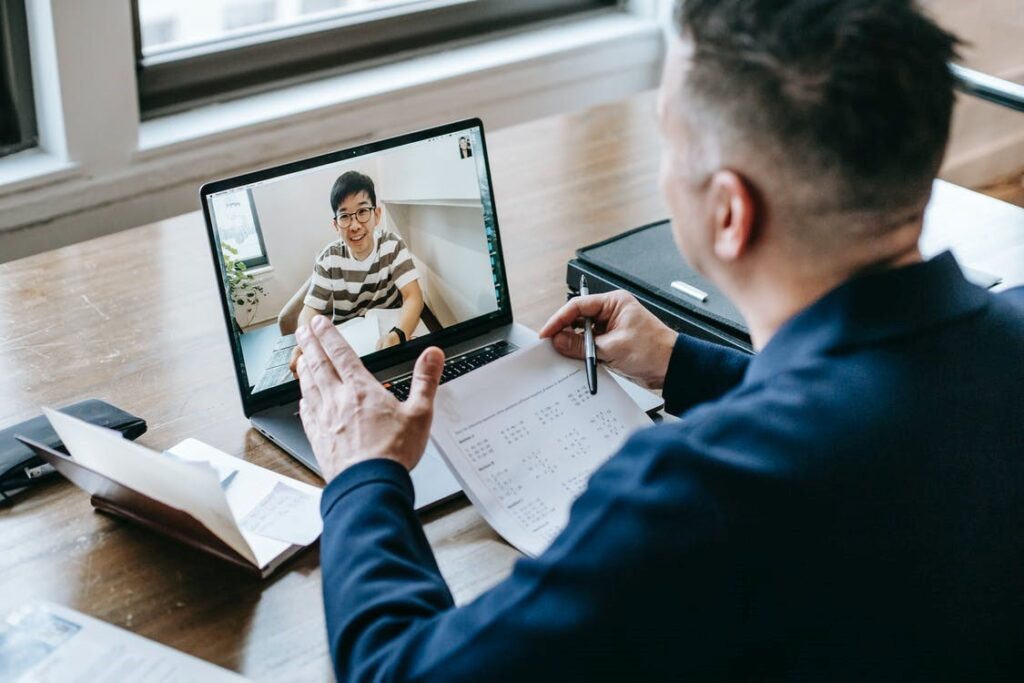Essential tips for the online classroom
Online learning has become a necessary part of life and although it offers its own challenges, if you understand the key differences between working in a face-to-face ESL classroom and how to prepare for the online classes, then you will be able to make the transition smoothly and with confidence. This article will discuss about the essential tips that would help you have a successful online lesson.
THE CLASSROOM ENVIRONMENT
The first thing to consider is your workstation. Wherever you are working from suddenly becomes your classroom. For some, they will be able to carry out online teaching from your school or language centre, however, for others, it will be a case of online teaching from your home.
Just as with your real classroom, it is essential that your surroundings reflect professionalism. As a result, it is important to have a tidy background. Use your ZOOM connection to host a meeting with yourself so that you are able to clearly see what your students will be viewing. Make sure that the background is not cluttered, that there are no personal items on display and that there are no lights shining and causing reflection.
For some ESL teachers, they prefer to eliminate many of these difficulties by having a large whiteboard which they sit in front of. This can be decorated to make the “classroom “more attractive and in addition, the whiteboard can be used by the teacher during the lesson if they prefer to write rather than screen share etc.
Lighting is an important thing. Make sure that your students will be able to clearly see your face, so do not sit with the light behind you i.e. do not sit in front of a window as otherwise you will only be a black shadow. If you are having a class early evening then make sure that if it is going to start getting dark during your lesson that you have the lights on ready, rather than having to stop the class to turn on the lights.
Remember that although online you are still teaching and as such, you need to make sure that you are professional. To do this, make sure that your shoulders are covered and you give an overall neat and tidy appearance.
ESSENTIAL MATERIALS
Make sure that you have a glass or bottle of water nearby so that if you become a little hoarse you can take a quick sip of water.
In addition, you need paper and pen close by so that you can make notes on the lesson/students.
If at all possible have your lesson plan printed out – and if this is not possible, then at least write down the key points on paper to refer to so that the lesson progresses well.
Also make sure that you have a source of time nearby. It is preferable if this is a watch or clock so that you are able to look frequently, however, if there is nothing else then have your phone nearby – although make sure that your phone is on silent the whole time.
It is important that you are able to make sure that your students can hear you and that they can hear you. As a result, it is suggested that you invest in a microphone. As you need to have, your hands-free for props/writing/computer screen sharing etc. then your microphone needs to either clip-on or be on a stand.
If you are going to be using props. Flashcards etc. during the session make sure that you have these laid out within easy reach to avoid turning away from the camera.
THE LESSON ITSELF
Make sure that you are prepared for the lesson – log into your session at least five minutes prior to the lesson so that you have time for any sudden internet or computer issues.
If you are continuing a class that you were, teaching face to face then you may find it useful to print out the name list and make sure that you know who is who! – as you may have got used to knowing where they sit in the physical classroom then it can be difficult to remember names as easily when they are not in the same place as usual.
When you start the lesson, make sure you remember to smile – simple as it sounds, many teachers are so busy thinking about the class that they may forget to smile and greet everyone!
Although face-to-face classes require flexibility, online classes require even more. Remember that students are adapting to online teaching and so what worked with one class when you were meeting face to face now totally falls flat. If this happens, do not be discouraged – instead, simply try to find out what works for the online class – if it similar or the same as when you meet face to face then great – if not, then find out what works for online and make sure that you note down which type of activity works and which ones simply do not.
As students are not able to pick up on your body language in the same way as in a face-to-face classroom, it is important to make an effort to be extra positive and give compliments throughout the lessons. It is important to make sure that you are giving students time to talk, so be aware of how much you are talking and the amount of time you are giving for the students to practise – you should aim for your talk time to less than the student talk time.
As in a face-to-face class, it is important to be active and to ensure that there is at least an element of fun, with a wide variety of activities so that the lesson has a variety of different types of activities so that students can be refreshed with the start of a new focus.
For younger students you may like to devise a reward chart of some kind – this can be a simple chart on a piece of paper where you draw on stars or something more complex such as an outline reward system – as long as there is a reward, the form it takes doesn’t really matter.
AFTER THE LESSON
With face-to-face teaching, you can say something positive to students as they are leaving or chat individually with students after class – with online it is much more difficult. As a result, it is suggested that you follow up after the lesson with a short message of encouragement and guidance – in this way, it will feel much more personal and students will feel that they matter as individuals as well as being part of a class.
Make sure that you write notes either during or directly after the class – if you leave it, then it is easy to forget how each student did and which activities did and did not work.
Overall, online teaching is an inevitable part of ESL teaching life – thanks to those essential tips below that you are prepared, be ready to learn about something new and embrace this new form of teaching!
Are you facing difficulties in finding and securing teaching positions in Vietnam? Are visa procedures causing you trouble? Feeling overwhelmed and directionless upon your arrival in Vietnam for teaching assignments? Don’t worry, VTJ’s English Teaching Placement in Vietnam (EPIV) Program 2024 provides comprehensive support to solve ALL the matters.
👉👉👉 Click HERE to request free consultation








